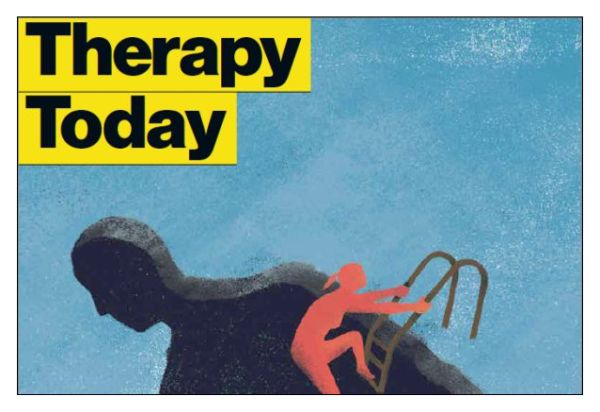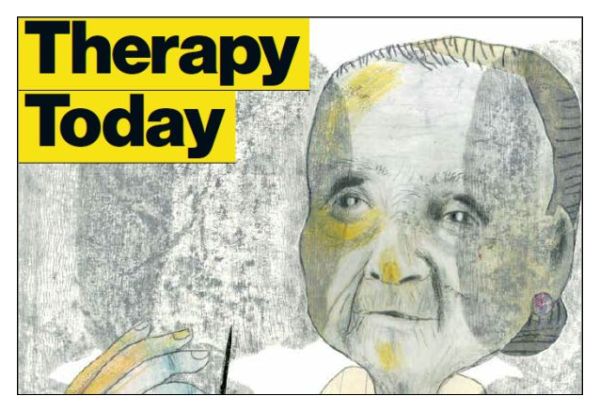The huge challenge of meeting public need and demand for psychological therapies within already overstretched resources may seem like a mission impossible, but digital innovations are already playing a transformative role. Could they be the answer to making therapy more widely available?
NHS England has been tasked with increasing the treatment capacity of IAPT services over the next five years from 15 to 25 per cent of adults with mild to moderate anxiety and depression, and providing mental health care to at least 70,000 more children and young people. Part of this plan is the greater use of non-face-to-face services, and the Department of Health is supporting a number of trials and pilots to develop digital alternatives to the traditional face-to-face appointment with the therapist or psychologist in the clinic or counselling room.
One way to meet the rising demand within budgetary constraints is to cut the human element from the equation, much as supermarkets have introduced customer self-checkouts to cut their wage bills. Yet a report published in the British Medical Journal last year suggests this may be a false trail.1 Contrary to a body of studies demonstrating the effectiveness of online therapy, the REEACT trial, the largest of its kind, found computerised CBT (cCBT) to be of little or no benefit, and its authors concluded it was an inefficient use of resources. The main problem was low engagement with the commonly prescribed Beating the Blues and MoodGYM programmes; participants in the trial said they wanted more direct support from a human therapist.
The need for the human element is something of which those developing computerised systems are well aware. ‘These types of interventions don’t have the same positive effect without human interaction. For the client, knowing someone is there, checking in on their progress, adds accountability and responsibility,’ says Derek Richards, Director of Clinical Research and Innovation at SilverCloud. SilverCloud, born out of a seven-year research project at Trinity College, Dublin, offers 40-minute CBT-based modules supplemented with asynchronous text messages from a clinician. The average user will recover within 4.8 sessions (as measured by clinical scales such as GAD-7), but the drop-out rate is 75 per cent. Richards takes the pragmatic view that the programme is not designed as a stand-alone system and some clients may need a higher intensity of human intervention: ‘It’s not a panacea. It’s one step in care. My view is that SilverCloud or any other application is not a fix for everything,’ he says.
Around 2,000 people sign up to the SilverCloud system each year through the Berkshire Healthcare NHS Trust IAPT service. Judith Chapman, Clinical Director of Talking Therapies at Berkshire IAPT, says it was the therapists who needed more persuading of its benefits, not the public: ‘The bigger challenge was for the workforce to know that it’s not a lesser treatment and it’s working.’ But Berkshire IAPT is also trialling a new one-to-one online therapy programme, staffed by 10 therapists, using a platform provided by IESO Digital Health. This provides a secure chat room where therapists use CBT with their clients at a designated time slot. Chapman points out that cost-efficiencies include not having to employ a receptionist or provide a private and suitable counselling room, and that therapists can work alongside each other in an open-plan office.
She agrees that computerised therapy is not for everyone; it’s not suitable for people with complex needs, social problems and addictions, for example. However, for others online therapy can remove barriers to finding support. Men – notoriously hard to persuade to seek counselling – seem to prefer the online option: Berkshire IAPT reports a 50/50 ratio of men to women accessing online support, compared with 35/65 among those who have face-to-face therapy.
Removing barriers to access has been a selling point for Big White Wall (BWW), an online platform developed in partnership with the Tavistock and Portman NHS Foundation Trust. BWW offers facilitated online peer support through group and one-to-one chats, where users are anonymised. This sits alongside psycho-education and creative activities such as posting imagery and words on a virtual wall. The benefits derive from the 24/7 access, says BWW Service Manager Ian Toman. ‘BWW offers estimated savings based mainly on reducing unplanned care – we’re available when other services may be less accessible. Two thirds of our log-ins are out of hours. We complement existing services and add capacity where there might be a need out of hours, or at home, or for people who don’t want to engage with existing services.’
Yet, while popular with the NHS and universities, this award-winning platform has encountered a growing demand for human presence. Feedback from NHS commissioners and individual members led to the addition of a LiveTherapy option in 2012. The service is not yet available to all users, but BWW is recruiting more BACP and/or BABCP registered therapists this year to expand it.
Digital youth
Young people are the most likely client group to welcome digital therapy, and they are also the group for whom improved access is very much needed. Youth Access, which represents a national network of 170 youth information, advice and counselling services (YIACS), has received over £150,000 from Health Education England’s Innovations Fund for its Digitalk project, which will fund 16 YIACS to train and build staff skills in online counselling. One of its members, Off the Record Croydon, is a lead partner in the Digitalk programme, with its online counselling and groupwork service. Other agencies will ‘white label’ from Off the Record’s site, so that the platform can be copied and rolled out cost effectively. Up to 12 young people can take part in weekly SkyCasts, a blend of workshop and online group therapy led by a counsellor and offering psycho-education and interactive talk. Participants can choose to interact but do not have to do so. But the visible, live human presence is important, says Allie Cairnie, Off the Record’s Innovations and Development Co-ordinator. ‘It really helps our users to see a person on the webcam delivering a workshop. It means you have all the benefits of offering an online service, while maintaining a human, personal touch. Young people have been involved in the design and piloting of this so it has come from what they want,’ she explains.
Off the Record says the capacity of the SkyCasts to reach a wider audience is a key benefit. It has noticed many more young Asian women and lesbian, gay, bisexual and transgender young people use the online service, compared with face-to-face counselling and support services.
This month Off the Record is to launch SkyLine, a one-to-one online counselling service, to complement the webcasts.
Mobile therapy
Online therapy has benefited hugely from the ever-growing availability of mobile multimedia devices; instant, on-the-go services at minimal cost are a cultural norm in the industrialised world. Typical of this is the venture capitalist-backed US app TalkSpace, which has over 70,000 users. For $25 a week, you can have unlimited access to text message exchanges with a licensed therapist. Existential psychiatrist Irvin Yalom, who advises the company, is a recent convert. Speaking at the TalkSpace Future of Therapy conference in New York in April this year,2 he explained how his initial doubts had been overcome: ‘I would have thought that the major problem would be that they are not focused on the here-and-now and what’s happening between the therapist and patient. And yet, compared with many of the new movements in psychotherapy, with cognitive behavioural therapy, they are far more involved in this outfit with the nurturing, with the here and now and the patient relationship. So that has been a change of heart for me entirely. I’ve got used to the idea that something different is happening. It’s not the sort of therapy I do but it’s a therapy of worth.’
The digital revolution has undoubtedly made counselling accessible to people with mobility problems and others whose disabilities make it hard for them to leave their home. Person-centred counsellor and private practitioner Helen Rutherford, who has a progressive disability herself, uses instant chat, email and video/audio platforms. Online interventions, she says, give the client a greater sense of autonomy, but human connection is a vital component. ‘I feel the human element to therapy cannot be replaced. Computers can be useful to educate in a self-help type of approach. However, this is very different to the relational element that is the catalyst for change. An advanced empathetic understanding is key to the development of the relationship I have with my clients. Offering that level of understanding allows clients not to feel isolated and alone in their experiences. If there was no human involved this would surely feed into that element of isolation some clients feel,’ she says.
Rutherford finds that the written word provides additional material for reflection, for both therapist and client, but new skills are needed. ‘You need to have an awareness and understanding of miscommunication, the safety of the client and any fantasy that the client may bring into the session.’
Assistive technology, such as speech recognition systems for people with cerebral palsy, will become an invaluable tool in accessible therapy, Rutherford believes: ‘It is early days but I hope that assistive technology and therapy can be combined to support many more people.’
The jury remains out as to whether digital therapy is as clinically effective as face-to-face therapy with a human therapist, which also raises questions about its cost-effectiveness. Health economist and researcher Simon Leigh of Lifecode Solutions has a special interest in the quality control of mental health applications. He believes that platforms using algorithms – a step-by-step approach to which cognitive behavioural therapy (CBT) is ideally suited – can vastly reduce waiting lists and save money. But, he warns, they also carry a significant risk.
‘The potential to save money is there [in these systems] and the best way they can do that is not to be constrained by a human being,’ he says. But the most extreme version, where there is no interaction with a skilled therapist, whether through messages or in an online conversation, carries the danger that the user will either not use it at all or there will be no monitoring of how that person is progressing, he warns.
The economic argument may look good on paper but it fails to add up if the service is ineffective. John Nuttall, Professor of Integrative Psychotherapy at Regent’s University, London and Chair of the third sector service West London Centre for Counselling (WLCC), contests the reliability and depth of therapy that can be obtained from computerised systems, and particularly the quality of tick-box computerised assessments. ‘Research shows that psychotherapy effectiveness is about the relationship that builds between two people, and that starts in the assessment. The depth of a presenting problem is not always clear via a computer or over the phone, or ticking boxes on a screen. This does not indicate the underlying issues causing depression or anxiety and assessors don’t get a feel for the origins of the distress,’ he says. The very ethos of psychotherapy is at stake, in Nuttall’s view. ‘We have to be careful to put systems in place that fulfil cost-effective objectives,’ he agrees. ‘This is something that the profession wishes to deliver. But this does not mean sacrificing the clinical process and outcome to achieve spurious low-cost delivery.’
More from Therapy Today

The true cost of managed care
Free article: Catherine Jackson reports from a recent conference on the future of psychological therapy. Therapy Today, May 2016

Co-location or collusion
Free article: How ethical are the Government’s proposals for closer working between IAPT services and Jobcentre Plus? Catherine Jackson reports. Therapy Today, April 2016

Dementia and embodied psychotherapy
Open article: Beatrice Allegranti has created a short film to help clinicians and professional and family carers develop their understanding of the experience of people with dementia and support them creatively. Therapy Today, March 2016
References
1. Gilbody S, Littlewood E, Hewitt C et al. Computerised cognitive behaviour therapy (cCBT) as treatment for depression in primary care (REEACT trial). British Medical Journal 2015; 351: h5267.
2. www.talkspace.com/online-therapy/future-of-therapy-2016/doctor-irvin-yalom-explains-the-evolution-of-therapy (accessed 19 May 2016).
